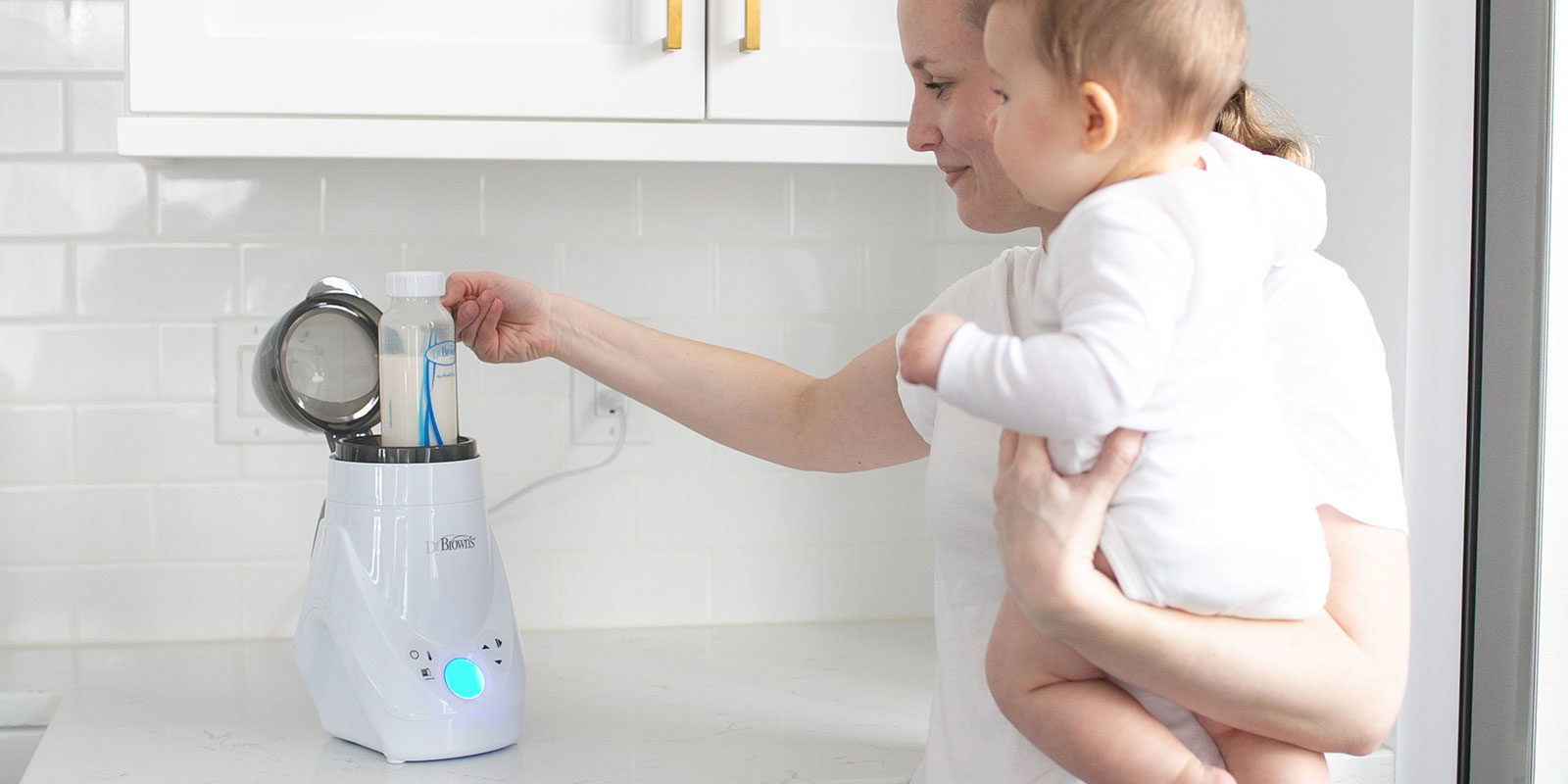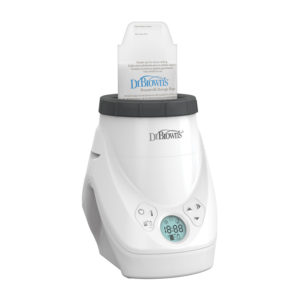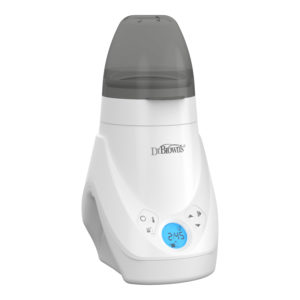Baby’s hungry and it’s T-minus a few minutes before it turns to hangry – but do you feed them a bottle straight from the fridge, or do you take the time to warm it up? Some little ones are perfectly fine with a cold bottle, while others just have to have it warmed to perfection.
If your baby is among the warm party – or you’ve found that a warm bottle before bedtime or naptime helps them fall asleep faster and sleep longer – fret not. We have tips and tricks to warming a baby bottle in no time.
Bottle Warming Options
While the ideal temperature for formula or breast milk is at or just below body temperature – 98.6 degrees Fahrenheit – that’s more of a guideline. Before you bust out the thermometer, consider the wrist method to test the temperature: just drop a couple dribbles from the bottle onto the inside of your wrist. If it feels cold, warm it up a little more; if it feels hot, let it cool. Bonus tip: after warming the bottle, swirl the contents around to ensure consistent temperature throughout.
How to Warm Baby Bottles
On the stove. Fill a pot with water at least the same height as the milk in your bottle. Warm the water on your stove top first, then place the bottle in the warmed water until the milk reaches near body temperature. Enter, wrist test. With the stove top method, you don’t want the water boiling. You want to dip your finger in and think longingly of bygone days filled with soothing bubble baths and you-time.
Under the faucet. Warm your bottle by holding it under warm-to-hot running water and rotating it around to reach all sides for roughly two minutes. Using warm faucet water is especially great for defrosting frozen breast milk.
In a bottle warmer. Bottle warmers are designed specifically for, well, warming bottles. Most are easy to use and quickly warm milk to that ideal body temperature. And, let’s face it – when your baby is fussy and hungry, “quickly” is the word of the moment. The Dr. Brown’s Deluxe Bottle Warmer heats up bottles safely using steam, which provides a uniform warmth and optimal nutrition retention.
So, what about microwaves? Well, the American Academy of Pediatrics specifically says that microwave warming is a no-go. That’s because while the bottle may feel cool after nuking it, the liquid inside can actually be really hot. And it heats liquid as unevenly as that frozen meal you made for lunch; one part is tongue-burning hot while the next still has ice crystals. Plus, the composition of breast milk in particular may change if it’s warmed up too much.
How to Use a Bottle Warmer
TIP 1: Ensure bottle fit.
Bottles come in different shapes and sizes, so be sure your bottles will fit into the warmer you select. The Dr. Brown’s Deluxe Bottle Warmer comes with an adjustable basket, so it fits all Dr. Brown’s bottles and most other bottle brands. The bottom section of the basket can be turned upside down so smaller bottles sit higher in the chamber and are easier to remove. This handy video shows how to use the warmer and the basket.
TIP 2: Remove bottle parts while warming.
When warming Dr. Brown’s bottles, remove the internal parts first (the vent insert and reservoir tube). This helps prevent pressure build up and leaks during warming. It’s okay to leave the nipple and collar on the bottle loosely, or alternatively, use the Dr. Brown’s Travel Cap.
TIP 3: Use caution with glass bottles.
Wet glass is slippery, so when warming glass bottles, use a firm grip. We recommend warming your glass bottles with the Dr. Brown’s 100% Silicone Glass Bottle Sleeves attached, to help protect the glass. Again, remove the internal parts before warming.
TIP 4: Use distilled water.
Distilled water will help reduce the scaling that happens naturally inside the warmer. You can get distilled water from many big box retailers, especially those that specialize in baby.
It doesn’t hurt to try each bottle warming approach to get the hang of them all, just in case you need to use one in a pinch. As you discover the perfect bottle warming option for you and baby, the two of you will be well on your way to Happy Feeding™. Questions? Contact us – we’re happy to help!


